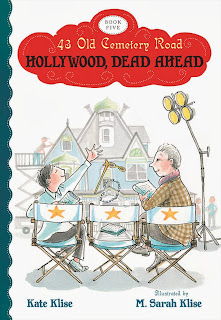O'Brien, T. (1990). The things they carried. Boston, MA: Mariner Books.
"It's astonishing. It fills the eye. It commands you." p. 77
Summary:
The Things They Carried is a blend of fiction and reality. The author makes it clear that the stories contained within are works of fiction rooted within the truth and reality of what goes on during combat. Set during the Vietnam War, it's a stick-with-you and change-your-narrow-perspective about war from veteran Tim O'Brien's point of view. The collection of stories begins with "The Things They Carried," a story detailing what is literally and metaphorically carried by soldiers. The stories that follow are intertwined, delicately slipping in and out of one another, introducing men the reader grows to care about and empathize with, and sharing with the reader the ugliness and beauty and stark awareness that can be experienced only on the battle field.Impressions:
I loved this book. From the beginning when a soldier is defined by what he carries--from comic books to disease to all kinds of emotional baggage--to the heart of what it's like to be a soldier, O'Brien's stories slowly and deeply worm into the reader's consciousness. Perhaps the most touching tales for me were about the women in the men's lives. Mary Ann's spirit and Linda's strength will be in my heart for a long time. The author invites the reader in and grabs hold. I will never say I don't like war stories again, as this author at the very least made me realize that they are not stories about war, rather they are about the human experience, and at best, this book transformed me a little, awakened a sensitivity that I didn't know was there.
Reviews:
From Library Journal:Winner of a National Book Award in 1979 for Going After Cacciato ( LJ 12/15/77), O'Brien again shows his literary stuff with this brilliant collection of short stories, many of which have won literary recognition (several appeared in O. Henry Awards' collections and Best American Short Stories ). Each of the 22 tales relates the exploits and personalities of a fictional platoon of American soldiers in Vietnam. An acutely painful reading experience, this collection should be read as a book and not a mere selection of stories reprinted from magazines. Not since Kurt Vonnegut's Slaughterhouse - Five ( LJ 3/1/69) has the American soldier been portrayed with such poignance and sincerity. Literary Guild featured alternate. Previewed in Prepub Alert, LJ 11/15/89.
- Mark Annichiarico, "Library Journal"
Citation: Annichiarico, M. M. (1990). The things they carried. Library Journal, 115(3), 212.
Weapons and good-luck charms carried by U.S. soldiers in Vietnam here represent survival, lost innocence and the war's interminable legacy. "O'Brien's meditations--on war and memory, on darkness and light--suffuse the entire work with a kind of poetic form, making for a highly original, fully realized novel," said PW. 60,000 first printing.
Citation: Kaganoff, P. P. (1991). Forecasts: Paperbacks. Publishers Weekly, 238(11), 71.
Library Activity:
The Things They Carried is required reading in many high school history and English classes. O'Brien so eloquently states in the book that "stories are for joining the past and the future" (O'Brien, 1990, p. 36). In collaboration with the teachers in your school, extend this experience to the library by inviting real soldiers for a day of discussion and insight. Carve out a comfortable place in the library for the veterans to serve as guest speakers to share their stories with students. In addition, bookmark the library homepage with the PBS interview with author Time O'Brien.
Tim O'Brien Interview on PBS
Tim O'Brien Interview on PBS






